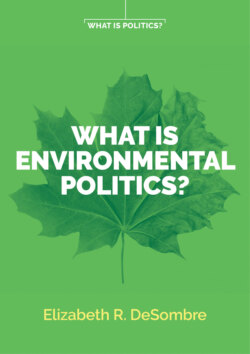Читать книгу What is Environmental Politics? - Elizabeth R. DeSombre - Страница 12
Time and Distance
ОглавлениеThe potential disconnect between when and where an environmental problem is caused and when and where its effects are felt is another element of environmental issues with important implications for environmental politics. Some environmental problems are felt immediately after they are created, in close proximity to the activities that create them. Indoor air pollution from poorly ventilated stoves, one of the major sources of this type of pollution in poor countries, has these characteristics.
But many environmental issues are experienced distant in either time or space from where the activities that create them take place. Invasive species may become a threat only decades or more after a first non-native species arrives in an ecosystem. Chlorofluorocarbons (CFCs) can cause problems for the stratospheric ozone layer a century or more after they were initially emitted. Some substances, such as greenhouse gases or acid rain, may take time to accumulate in sufficient quantities before major effects are felt.
The same kind of disconnect happens with distance. Much of the plastic that ends up in the garbage patches in the middle of the ocean was used on land, often far from the coasts. Acid rain can occur hundreds of miles from the power plant emissions that cause it. Persistent organic pollutants, such as polychlorinated biphenyls (PCBs) and dioxins, have been found in the blood and breast milk of indigenous peoples in the Arctic far from where these substances were used.
These lags in time and distance matter for several reasons. They can add to uncertainty (discussed in chapter 2) since, if a problem emerges far in time or space from its causes, the connection between cause and effect may not be immediately made. It also means that, by the time a problem is noticed, the behavior that causes it may already be widespread and thus harder to change. And on the side of resolving problems – which is often the stage at which the political process becomes involved – the time between when a behavior stops and a problem is resolved may be quite long, requiring people to take costly action long before the benefit is felt, which politicians may be reluctant to demand. The distance between cause and effect can be politically problematic if the causes of an environmental problem – and thus the location where the costs of changed behavior are felt – is in a different jurisdiction than the location where the effects – and thus the benefits of change – are experienced.
